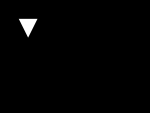Difference between revisions of "love.graphics.polygon"
m (Newin template) |
(→Examples) |
||
| Line 39: | Line 39: | ||
-- passing the table to the function as a second argument | -- passing the table to the function as a second argument | ||
love.graphics.polygon('fill', vertices) | love.graphics.polygon('fill', vertices) | ||
| + | </source> | ||
| + | |||
| + | |||
| + | === Concave polygon === | ||
| + | |||
| + | <source lang="lua"> | ||
| + | local vertices = {100,100,200,100,200,200,300,200,300,300,100,300} -- concave | ||
| + | local triangles = love.math.triangulate(vertices) | ||
| + | for i, triangle in pairs (triangles) do | ||
| + | love.graphics.polygon( 'fill', triangle) | ||
| + | end | ||
| + | love.graphics.setColor(1, 1, 0, 1) | ||
| + | love.graphics.polygon('line', vertices) | ||
</source> | </source> | ||
Revision as of 21:42, 6 June 2021
| Available since LÖVE 0.4.0 |
| This function is not supported in earlier versions. |
Draw a polygon.
Following the mode argument, this function can accept multiple numeric arguments or a single table of numeric arguments. In either case the arguments are interpreted as alternating x and y coordinates of the polygon's vertices.

|
When in fill mode, the polygon must be convex and simple or rendering artifacts may occur. love.math.triangulate and love.math.isConvex can be used in 0.9.0+. |
Contents
Function
Synopsis
love.graphics.polygon( mode, ... )
Arguments
Returns
Nothing.
Function
Synopsis
love.graphics.polygon( mode, vertices )
Arguments
Returns
Nothing.
Examples
Two ways of drawing the same triangle
This example shows how to give the coordinates explicitly and how to pass a table argument.
-- giving the coordinates directly
love.graphics.polygon('fill', 100, 100, 200, 100, 150, 200)
-- defining a table with the coordinates
-- this table could be built incrementally too
local vertices = {100, 100, 200, 100, 150, 200}
-- passing the table to the function as a second argument
love.graphics.polygon('fill', vertices)
Concave polygon
local vertices = {100,100,200,100,200,200,300,200,300,300,100,300} -- concave
local triangles = love.math.triangulate(vertices)
for i, triangle in pairs (triangles) do
love.graphics.polygon( 'fill', triangle)
end
love.graphics.setColor(1, 1, 0, 1)
love.graphics.polygon('line', vertices)
See Also
Other Languages
Dansk –
Deutsch –
English –
Español –
Français –
Indonesia –
Italiano –
Lietuviškai –
Magyar –
Nederlands –
Polski –
Português –
Română –
Slovenský –
Suomi –
Svenska –
Türkçe –
Česky –
Ελληνικά –
Български –
Русский –
Српски –
Українська –
עברית –
ไทย –
日本語 –
正體中文 –
简体中文 –
Tiếng Việt –
한국어
More info
